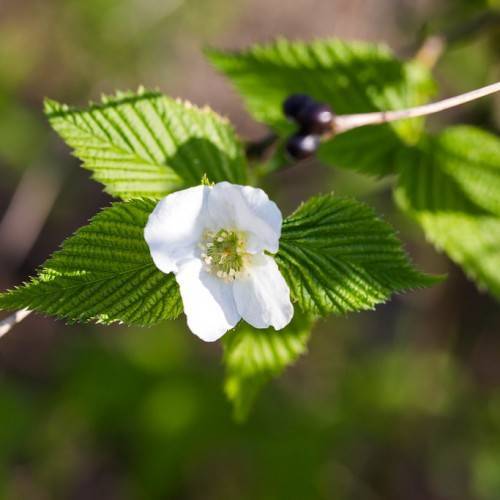
jet bead
Rhodotypos scandens
Cycle:
Perennial
Watering:
Average
Hardiness Zone:
4 - 8
Flowers:
Flowers In Spring
Sun:
Filtered shade, Full sun, Part sun/part shade
Soil:
Well-drained
Fruits:
Fruits In Summer Ready In Fall
Leaf:
Yes
Growth Rate:
Moderate
Maintenance:
Low
Salt Tolerant:
Yes
Care Level:
Medium
watering
Jet bead plants should receive about 1 inch of water per week. To ensure that they are properly hydrated, water them at least every other day, allowing the soil to dry out slightly between waterings. During hot periods or if the plant is actively growing, it may need more frequent watering. Do not allow the plant to sit in continuously wet soil. It is best to water lower areas of the plant first, as the top areas will receive more water due to normal evaporation. When watering Jet bead plants, use room temperature water.
sunlight
Jet Bead (Rhodotypos scandens) is an evergreen, flowering shrub native to parts of East Asia, including Japan, China, and Korea. This species of plant requires full sunlight throughout the year, in order to flower and produce its vibrant, blue berries. Jet Bead prefers at least 6 hours of direct sunlight each day, and it’s best if it gets more than this. The ideal location for a Jet Bead plant is 1 that gets ample sunlight in the morning, with some protection from intense afternoon sun. In the summer months, the plant should receive sunlight from an early sunrise until late evening. The intensity of the sun, however, should be slightly lower during the hot summer afternoons. Jet Bead plants are typically hardy and can withstand dry, warm conditions.
pruning
Jet bead (Rhodotypos scandens) responds very well to pruning. To keep the plant looking attractive and promote bushier growth, it's best to prune jet bead in late spring or early summer. Start by cutting out dead, damaged, or crossing branches to thin out the interior of the plant and create more clearance between its foliage layers. Carefully cut away any stems or shoots that are too long, misshapen, or out of place. To encourage growth and a fuller look, lightly prune out some of the older stems at their base. It's important to not overdo the pruning, especially if the plant is already well-established. Jet bead can be pruned in wide or narrow angles, depending on what kind of look you're hoping to achieve. Aim to remove no more than 1-third of the stem length in a single pruning session.
